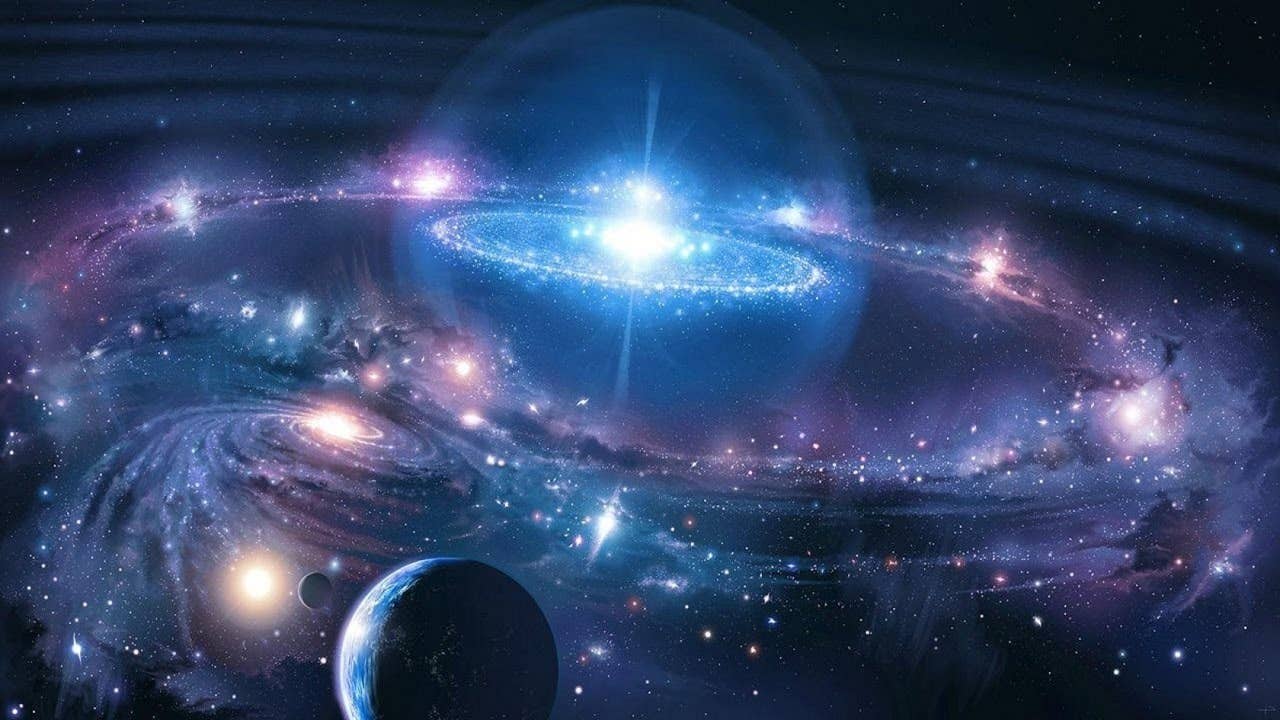Amount of information in visible universe quantified
Researchers present a numerical estimate for the amount of encoded information in all the visible matter in the universe.

[Oct 19, 2021: American Institute of Physics]
A numerical estimate for the amount of encoded information in all the visible matter in the universe. (CREDIT: Creative Commons)
Researchers have long suspected a connection between information and the physical universe, with various paradoxes and thought experiments used to explore how or why information could be encoded in physical matter. The digital age propelled this field of study, suggesting that solving these research questions could have tangible applications across multiple branches of physics and computing.
In AIP Advances, a University of Portsmouth researcher attempts to shed light on exactly how much of this information is out there and presents a numerical estimate for the amount of encoded information in all the visible matter in the universe—approximately 6 times 10 to the power of 80 bits of information. While not the first estimate of its kind, this study's approach relies on information theory.
"The information capacity of the universe has been a topic of debate for over half a century," said author Melvin M. Vopson. "There have been various attempts to estimate the information content of the universe, but in this paper, I describe a unique approach that additionally postulates how much information could be compressed into a single elementary particle."
To produce the estimate, the author used Shannon's information theory to quantify the amount of information encoded in each elementary particle in the observable universe as 1.509 bits of information. Mathematician Claude Shannon, called the Father of the Digital Age because of his work in information theory, defined this method for quantifying information in 1948.
"It is the first time this approach has been taken in measuring the information content of the universe, and it provides a clear numerical prediction," said Vopson. "Even if not entirely accurate, the numerical prediction offers a potential avenue toward experimental testing."
Related Stories
Recent research sheds light on the ways information and physics interact, such as how information exits a black hole. However, the precise physical significance of information remains elusive, but multiple radical theories contend information is physical and can be measured.
In previous studies, Vopson postulated information is a fifth state of matter alongside solid, liquid, gas, and plasma, and that elusive dark matter could be information. Vopson's study also included derivation of a formula that reproduces accurately the well-known Eddington number, the total number of protons in the observable universe.
While the approach in this study ignored antiparticles and neutrinos and made certain assumptions about information transfer and storage, it offers a unique tool for estimating the information content per elementary particle. Practical experiments can now be used to test and refine these predictions, including research to prove or disprove the hypothesis that information is the fifth state of matter in the universe.
Like these kind of feel good stories? Get the Brighter Side of News' newsletter.
Tags: #New_Discoveries, #Space, #Universe, #Information, #Matter, #Science, #Research, #The_Brighter_Side_of_News
Joseph Shavit
Head Science News Writer | Communicating Innovation & Discovery
Based in Los Angeles, Joseph Shavit is an accomplished science journalist, head science news writer and co-founder at The Brighter Side of News, where he translates cutting-edge discoveries into compelling stories for a broad audience. With a strong background spanning science, business, product management, media leadership, and entrepreneurship, Joseph brings a unique perspective to science communication. His expertise allows him to uncover the intersection of technological advancements and market potential, shedding light on how groundbreaking research evolves into transformative products and industries.



